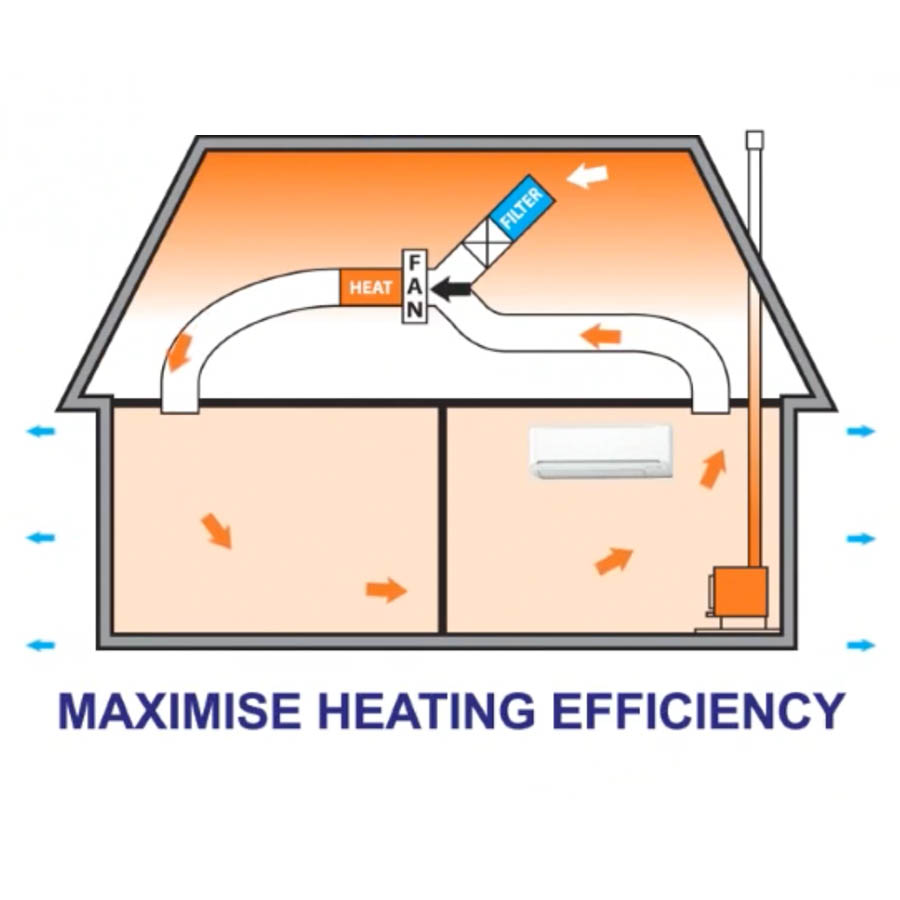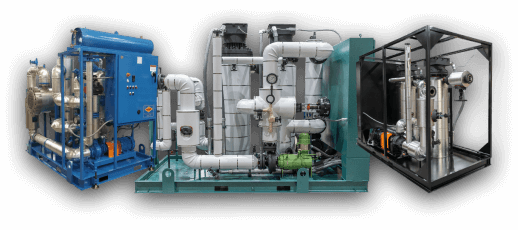A Comprehensive Guide to Using DVS Heat Transfer Systems in Renewable Energy Projects
Wiki Article
Developments in Heat Transfer Systems: What You Need to Know for Optimal Efficiency
Innovations in Heat transfer systems are changing performance throughout numerous industries. Advanced products like graphene and nanofluids guarantee considerable renovations in thermal conductivity. On the other hand, the assimilation of IoT and maker learning uses chances for real-time surveillance and enhanced power effectiveness. The landscape of thermal administration is quickly developing. Comprehending these growths is vital for achieving suitable system performance and sustainability in the future. What certain advancements are shaping this makeover?Emerging Products for Enhanced Heat Transfer

Advanced Heat Exchanger Styles
While conventional Heat exchangers have actually offered their purpose in numerous applications, advanced designs are currently emerging to meet the increasing demands for efficiency and performance. These cutting-edge layouts, such as plate, shell-and-tube, and finned-tube Heat exchangers, integrate improved area and enhanced circulation patterns to enhance thermal transfer rates. On top of that, small layouts allow for minimized area requirements without endangering performance. Advanced materials, such as composites and corrosion-resistant alloys, additionally boost sturdiness and efficiency under extreme problems. Simulation innovations and computational liquid characteristics are significantly utilized to improve these layouts, ensuring peak Heat transfer characteristics. As industries seek to reduce power usage and optimize result, the fostering of advanced Heat exchanger layouts is essential in accomplishing these objectives.The Duty of Nanotechnology in Heat Transfer
Nanotechnology plays a crucial duty in enhancing thermal conductivity within Heat transfer systems. By manipulating materials at the nanoscale, researchers have actually achieved substantial enhancements in energy effectiveness. These improvements not only optimize efficiency yet additionally add to even more lasting energy options.Enhanced Thermal Conductivity
Substantial improvements in thermal conductivity have arised with the application of nanotechnology, revolutionizing Heat transfer systems throughout numerous industries. By incorporating nanoparticles into Heat transfer fluids and materials, researchers have accomplished amazing rises in thermal conductivity. These nanoparticles, such as carbon nanotubes, graphene, and metal oxides, enhance the Heat transfer properties due to their high surface location and one-of-a-kind thermal qualities. The resulting compounds show boosted efficiency in applications varying from electronic devices cooling down systems to renewable energy modern technologies. In addition, the capacity to tailor the size, shape, and composition of nanoparticles permits maximized thermal monitoring services. Therefore, nanotechnology remains to play a pivotal function in the growth of a lot more reliable and reliable Heat transfer systems, leading the way for improved commercial applications.
Energy Effectiveness Improvements

Integration of IoT in Heat Transfer Solutions
The assimilation of IoT in Heat transfer systems introduces the execution of clever sensors that improve operational effectiveness. These sensing units make it possible for real-time information monitoring, enabling prompt modifications and optimizations. This technical innovation has the possible to considerably enhance efficiency and power monitoring in Heat transfer applications.Smart Sensors Implementation
As Heat transfer systems advance, the integration of wise sensing units through the Web of Things (IoT) has actually emerged as a transformative method. These sensors allow real-time tracking of temperature level, pressure, and flow rates, enhancing system effectiveness and integrity. By accumulating and transmitting information, they help with aggressive maintenance, reducing the danger of system failings. In addition, smart sensors add to energy cost savings by refining operational criteria based on ecological conditions. Their ability to assess fads and anomalies permits notified decision-making, making sure peak efficiency of Heat transfer systems. As industries increasingly adopt this modern technology, the application of wise sensors stands to change how Heat transfer systems are handled, leading the method for better sustainability and enhanced efficiency end results.Real-Time Data Tracking
Exactly how can real-time data checking boost the efficiency of Heat transfer systems? By incorporating Web of Things (IoT) modern technology, Heat transfer systems can leverage constant data collection from wise sensors. This real-time surveillance permits instant analysis of pressure, flow, and temperature prices, allowing drivers to recognize inadequacies without delay. Consequently, modifications can be made to optimize efficiency, lower energy usage, and extend tools lifespan. In addition, anticipating maintenance can be implemented, minimizing unforeseen downtime and expensive repair services. The capability to visualize performance metrics via control panels improves decision-making, cultivating a positive approach to system monitoring. Eventually, real-time information keeping an eye on not just improves operational effectiveness but also adds to sustainability objectives within commercial processes.Energy Efficiency and Sustainability Trends
Power effectiveness and sustainability fads are reshaping the landscape of Heat transfer systems, driving innovation and conformity throughout numerous industries. Organizations are significantly prioritizing energy-efficient layouts to reduce functional expenses and minimize environmental impacts. The combination of sustainable energy resources is becoming much more common, allowing Heat transfer systems to run sustainably while meeting regulative needs. Furthermore, innovations in modern technologies and materials advertise lower power intake and improve general efficiency. Lifecycle analyses are also acquiring traction, permitting business to review the ecological influence of Heat transfer systems from manufacturing to disposal. This concentrate on sustainability not just sustains business duty but additionally placements companies competitively in a market where consumers significantly prefer green remedies. As a result, energy performance and sustainability continue to be vital considerations for future advancements in Heat transfer technology.Developments in Thermal Management Solutions
While the demand for reliable Heat transfer remains to climb, technologies in thermal administration services are arising to resolve both efficiency and sustainability challenges. Advanced materials, such as stage adjustment materials and nanofluids, are being developed to boost Heat transfer efficiency - DVS Heat Transfer Systems. These materials improve thermal conductivity and permit far better temperature policy in various applications. Additionally, innovations like active thermal control systems are getting grip, allowing real-time changes to handle Heat flow successfully. These find out here systems add to energy cost savings and decrease the environmental effect of thermal processes. In addition, the assimilation of IoT in thermal monitoring promotes tracking and predictive upkeep, making certain optimized efficiency and longevity of Heat transfer systems. In general, these innovations represent considerable strides toward more lasting thermal administration practicesFuture Directions in Heat Transfer Innovation
Arising innovations in thermal administration options signify an encouraging future for Heat wikipedia reference transfer innovation. Researchers are significantly concentrating on developing products with exceptional thermal conductivity and improved power effectiveness. Innovations such as nanofluids, which include suspended nanoparticles, offer significant enhancements in Heat transfer performance. Additionally, the combination of smart products that adapt to varying temperature level conditions is obtaining traction, enabling even more effective and responsive systems. The rise of additive production methods is additionally making it possible for the style of complicated Heat exchanger geometries that maximize liquid circulation. Moreover, the application of machine understanding formulas is anticipated to reinvent the optimization of Heat transfer systems, promoting anticipating upkeep and performance enhancement. Jointly, these innovations are positioned to change the landscape of Heat transfer innovations in different markets.
Frequently Asked Concerns

How Do I Select the Right Heat Transfer System for My Application?
Picking the ideal Heat transfer system involves evaluating application demands, including temperature level ranges, fluid buildings, and effectiveness needs. Analyzing system types, upkeep considerations, and cost-effectiveness also plays a necessary role in making an informed choice.What Are the Upkeep Needs for Advanced Heat Exchangers?
Upkeep needs for advanced Heat exchangers typically include normal evaluations, monitoring for leakages, cleaning of surface areas, and guaranteeing optimal flow prices. Adhering to maker guidelines warranties reliable operation and prolongs the tools's life expectancy.
How Do Environmental Variables Affect Heat Transfer Effectiveness?
Environmental variables significantly affect Heat transfer effectiveness. Variants in air movement, moisture, and temperature effect thermal conductivity and convective Heat transfer, inevitably affecting system performance and necessitating factor to consider during the layout and operation of Heat transfer systems.What Safety And Security Criteria Apply to Heat Transfer Solutions?
Security criteria for Heat transfer systems typically consist of guidelines from organizations such as ASME and ASTM. DVS Heat Transfer Systems. These requirements address products, style, and functional techniques to guarantee dependability, efficiency, and defense against risks in numerous applications
Exactly How Can I Fix Usual Heat Transfer System Issues?
Troubleshooting common Heat transfer system issues entails looking for leakages, guaranteeing appropriate liquid flow, examining insulation integrity, and verifying temperature differentials. Identifying these elements can assist preserve system effectiveness and prevent additional difficulties.Nanotechnology plays an important role in enhancing thermal conductivity within Heat transfer systems. Substantial improvements in thermal conductivity have emerged through the learn this here now application of nanotechnology, revolutionizing Heat transfer systems across various markets. Improvements in thermal conductivity with nanotechnology have actually led the way for amazing renovations in energy effectiveness within Heat transfer systems. Power efficiency and sustainability fads are reshaping the landscape of Heat transfer systems, driving development and conformity across numerous sectors. The integration of IoT in thermal monitoring assists in monitoring and predictive maintenance, making sure optimized efficiency and durability of Heat transfer systems.
Report this wiki page